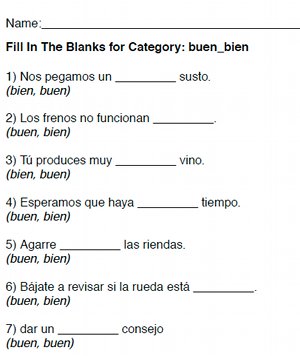Whether you like to cook or you like to go to restaurants, eating can be a great way to learn Spanish! Food is a big part of the Spanish culture and is always infused with mouthwatering spices. Seafood is something that is always found in Spanish cuisine and coupled with rice, onions, tomatoes and spices… well let's just say that equals a very tasty meal.
There are a few things you should do before you start this family-friendly activity. First, decide whether you prefer to cook at home or eat out. Then, visit www.123TeachMe.com and practice some food phrases to make the most of your dining experience. (http://bit.ly/pc1e8V)
If you prefer to eat out, we suggest a tapas restaurant. Tapas restaurants serve Spanish cuisine in small portions. It is a great option, especially if you would like to try several different foods. Search the yellow pages online to see which tapas restaurants have good ratings in your area. If you are determined to cook at home, first pick a dish to make. There are several different options, but one of our favorites is Centollo a la Sidra. Are you thinking: ¿No sé preparar ese platillo? Don’t worry about it! We have included the recipe below. Now are you wondering what the name Centollo a la Sidra means? Centollo is a European spider crab, so a rough translation would be crab to the cider. You can pick up all of the ingredients below at your local supermarket. If you prefer to get everything authentic you can order it from, www.tienda.com and have it delivered right to your door!
We hope you enjoy your next tasty Spanish dish! ¡Disfrute de su comida!
Ingredients:
1 medium onion, chopped
2 tablespoons olive oil
1 small tomato, peeled and chopped
Salt
Pinch of cayenne or chile powder
1/2 pound hake, cod, or other white fish fillet, without skin
1/2 pound crabmeat, picked over for shells and cartilage
3/4 cup hard cide
2 tablespoons chopped flat-leaf parsley
2 tablespoons bread crumbs
1 tablespoon butter
Preparation:
Sauté the onion in the oil in a large skillet, stirring occasionally, until soft.
Add the tomato, salt to taste, and the cayenne or chile pepper and cook for 8 minutes.
Put in the fish fillet and cook for 5 minutes, or until it begins to flake, turning it once.
Flake it in the skillet, then add the crabmeat, hard cider, and parsley, mix gently, and cook for 1 minute.
Oil 4 ramekins and spoon in the crab mixture. Sprinkle the tops with the bread crumbs and dot with the butter.
Put under a preheated broiler to lightly brown
Sources:
'The Food of Spain' by Claudia Roden



